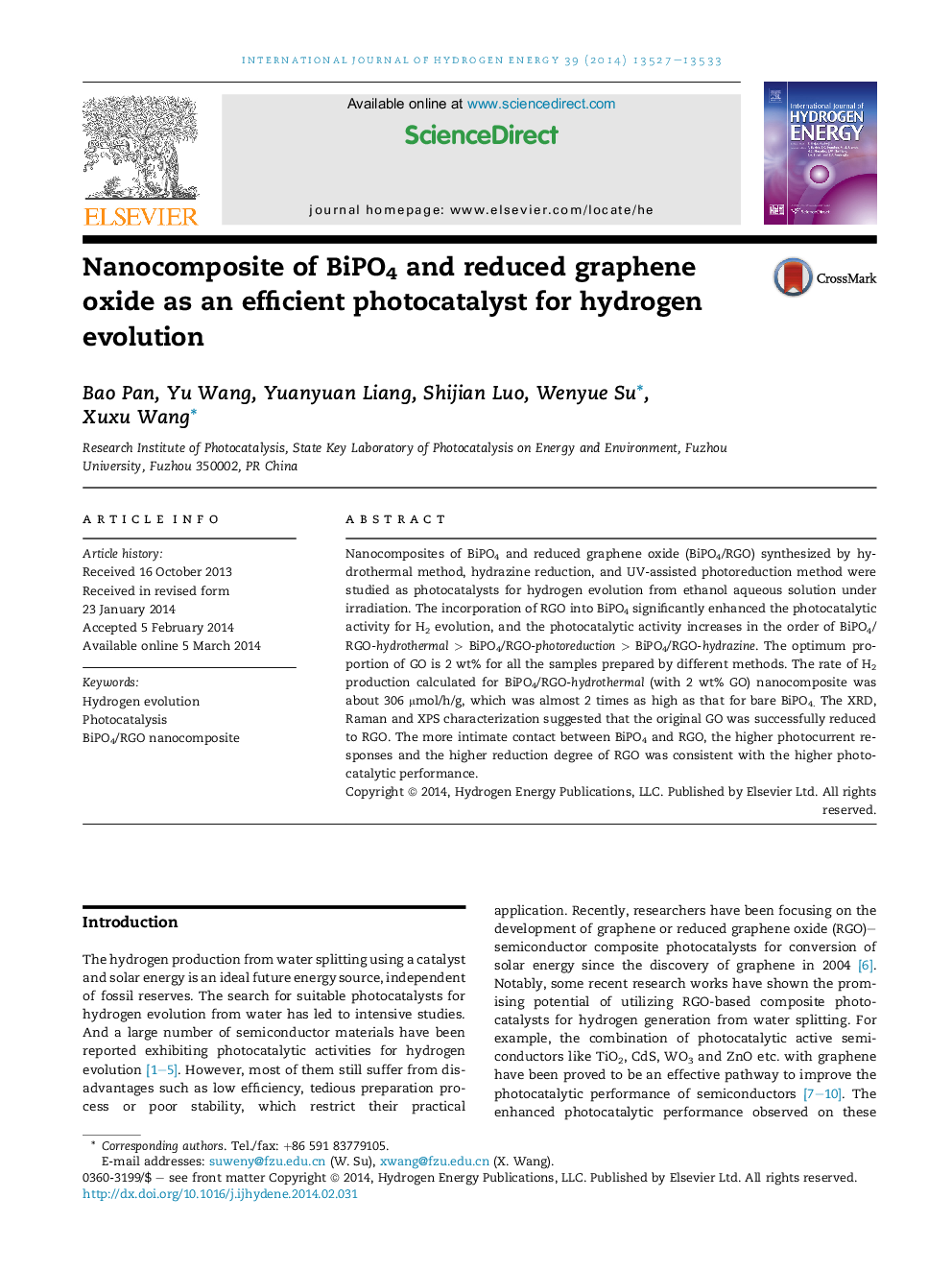| Article ID | Journal | Published Year | Pages | File Type |
|---|---|---|---|---|
| 1272650 | International Journal of Hydrogen Energy | 2014 | 7 Pages |
•H2 evolution activity of BiPO4 and BiPO4/RGO was first reported.•The incorporation of RGO into BiPO4 results in a significant enhancement in the photocatalytic activity.•Three different methods were used to prepare BiPO4/RGO, and hydrothermal method is the most effective one.
Nanocomposites of BiPO4 and reduced graphene oxide (BiPO4/RGO) synthesized by hydrothermal method, hydrazine reduction, and UV-assisted photoreduction method were studied as photocatalysts for hydrogen evolution from ethanol aqueous solution under irradiation. The incorporation of RGO into BiPO4 significantly enhanced the photocatalytic activity for H2 evolution, and the photocatalytic activity increases in the order of BiPO4/RGO-hydrothermal > BiPO4/RGO-photoreduction > BiPO4/RGO-hydrazine. The optimum proportion of GO is 2 wt% for all the samples prepared by different methods. The rate of H2 production calculated for BiPO4/RGO-hydrothermal (with 2 wt% GO) nanocomposite was about 306 μmol/h/g, which was almost 2 times as high as that for bare BiPO4. The XRD, Raman and XPS characterization suggested that the original GO was successfully reduced to RGO. The more intimate contact between BiPO4 and RGO, the higher photocurrent responses and the higher reduction degree of RGO was consistent with the higher photocatalytic performance.
